The Saint Queen of Malwa
By Smita Mukerji and Swapnil Hasabnis
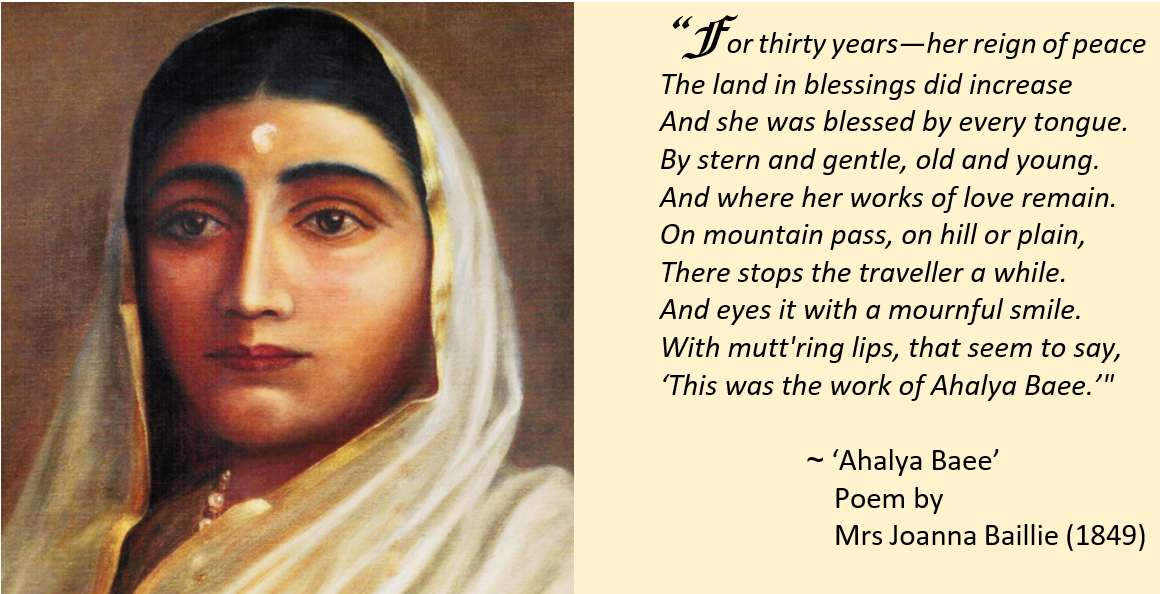
Scarce does one come across a comparable character in history as Rani Ahalyabai of the Holkars, in whom a deep spirituality and profound worldly wisdom found perfect coincidence. This illustrious kulvadhu of the Holkars was the epitome of purity, sagacity, charity and compassion, combined with sharp intellect, foresight, astute statesmanship and a remarkably insightful mind. Her catholicity famed her in faraway lands to which her renown was carried in the chronicles and eulogies of contemporary Europeans, an ideal of the grace and fortitude of Indian womanhood. In terms of contributions to the unified consciousness of Hindus she would be second only to Chhatrapati Shivaji, the founder of the Maratha Empire.

(Source: The Great Holkars)
Originating from the humble dhangars, a pastoral community or gadariyas, the Holkar State became one of the most powerful arms of the Maratha confederacy, founded by Malhar Rao Holkar, a superior military commander who served the Maratha army for over four decades and one of its most distinguished chiefs. He built his fabulous fortunes from revenues yielded by his possessions, among them, large domains of the Deccan, considerable areas of Khandesh, and portions ceded and tributes yielded by subordinated Rajput states. Known for his extravagant generosity and for being a considerate overlord[1], he was afflicted by a series of tragic events which threw the affairs of his domain into jeopardy.
Malhar Rao’s only son and successor Khanderao Holkar had perished in the siege of Kumher in Bharatpur, in 1754. At Malhar Rao’s death in 1766, Khanderao’s only son through his wife Ahalyabai Holkar, Male Rao, was anointed as the ruler. But soon after, he developed signs of mental illness and would frequently go into paroxysms, and died barely nine months of being put on the throne. Left without an heir, there were efforts by the minister of the Holkars, Gangadhar Jaswant, along with Raghoba, the brother of Peshwa Balaji Bajirao, to place a distantly-related adopted child on the throne for securing the continuance of his own power, but to their surprise, Ahalyabai moved with swiftness to prevent the state authority from descending into this compromised situation.
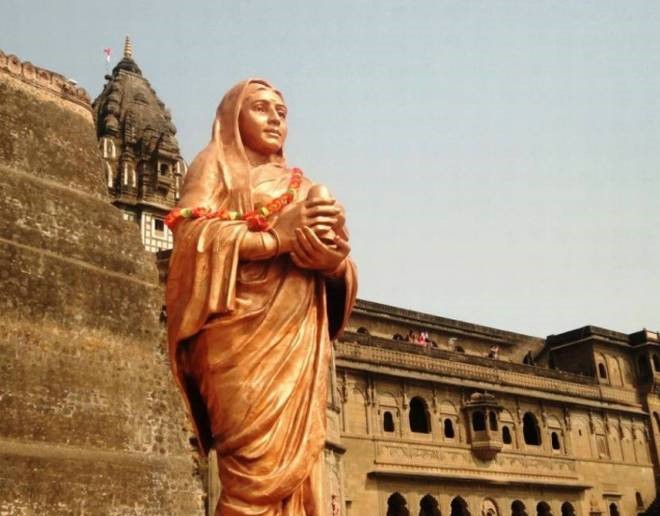
Ahalyabai (also known as Ahilyabai) was born on vaisakh saptami as per Hindu calendar (May 31, 1725 of Gregorian Calendar), in Chounde village in Ahmednagar District, in a Dhangar-Patil family. Married to Khanderao Holkar in 1733, her outstanding abilities were discovered early by her father-in-law who started involving her in administrative work and gave her the responsibility of the treasuries, duties which she fulfilled with such ease and efficiency that she would assume complete responsibility of the affairs of the state whenever Malharrao and Khanderao went on their campaigns. She received training in skills of warfare and started accompanying her husband and father-in-law in battle, and thus was able to hone all the prime qualities of kingship. After Khanderao’s untimely death, his wives chose the recourse of sati, save Ahalyabai, who was persuaded by the aging Malhar Rao to desist from the act and instead support him by continuing with her responsibilities towards the estates[2]. This purpose to which her father-in-law entrusted her was not forgotten by the young widow and at the tragic death of her son soon after Malhar Rao’s passing away, Ahalyabai refused to give way to irresolute grief and stoically resumed with her obligations towards the floundering Holkar state.
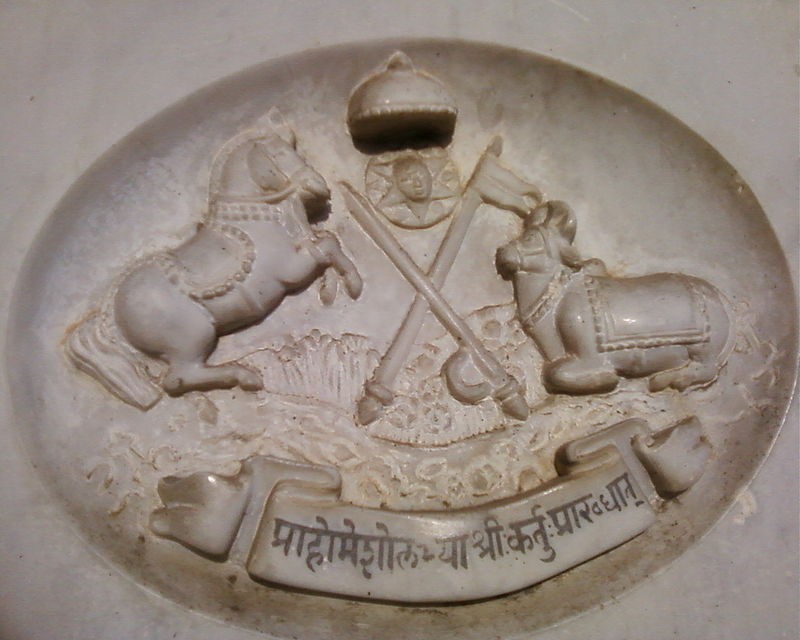
Her brilliance was first glimpsed in the manner she foiled the bid of Gangadhar Jaswant and Raghoba to manoeuvre themselves into a position to control the throne, yet won over the former to remain loyal to her by firm but gentle handling, restoring to him subsequently his position of honour as the Minister on account of his long services rendered previously. She successfully employed both diplomacy as well as show of power to rally the Maratha chiefs and Peshwa Madhavrao, who stoutly endorsed her claim, and put paid to prospects of a military flare up at Raghoba’s instigation and prevented the usurpation of the Holkar family’s right to manage the affairs of their state.

But Ahalyabai’s move was not mere clutching at power which was and has been forever the defining feature of political players. It was for her a calling to fulfil, a duty that she owed to her subjects whom she regarded as her children[3]. One of the first acts of administration that gave evidence of her perspicacity was in elevating Tukojirao Holkar, an unaffected and unwavering chief who had previously commanded Malhar Rao’s bodyguard, at the head of her army. It was this partnership of the trust and reliance of one and the undeviating loyalty of the other, to which may be ascribed the uninterrupted tranquility in the Holkar territory for over thirty years undisturbed by jealousy or ambition. This was moreover accomplished through the probity and moderation of the parties, mutual respect and the distinct and generally distant spheres of action; she as the titled head of the sovereignty and he as commander of the army, a charge that kept him long periods away from the capital and often obliged to act on his own accord. However matters related to governance and the overarching interests of the State were referred without fail to Maheshwar (the Holkar capital) and he never erred in any respect in affirming the position of his benefactress[4]. In all matters of war and peace and foreign affairs Ahalyabai’s authority remained supreme. The remarkable efficiency of her administration, her conduct of relations with other powers could be evidenced by internal calm and almost complete immunity from extraneous aggression, which caused trade, farming, artisanry and cities to prosper during her reign. Envoys from all principal rulers attended her court and likewise her representatives were present in the capitals of all major and minor kingdoms.

Through a strict yet humanitarian approach towards the sardars (military commanders) she inspired trust in her leadership. One incident may be cited in which Subhedar Tukoji Holkar insisted that the sardars paid up for war expenses, but the queen wrote back asking them to be relieved of the cost saying:
“The Saranjami Sardars have had their individual expenses. Our allotments to them are in proportion to the number of men engaged in their service, and not a jot more. The Sardars are, in person, present serving on the field. How is one justified, under these circumstances, to ask them to pay?”
The other factor which ensured the stability of her dominion was the strong hand of Mahadji Shinde, ruler of the Scindia state with its capital at Gwalior, who recognised and supported Ahalyabai’s sovereignty from the commencement of her reign till the end. But Mahadji too reaped the benefit of this association[5] gaining in reputation, so great was the virtue of the pious queen and the acclaim of her able and just rule[6]. Even the skirmish at Lakhairi between Scindia and Holkar chiefs in 1786 caused no rupture in relations between the two families.
The dispensation of her State’s affairs was inevitably directed with the thought of betterment of the condition of the country and the happiness of her subjects. Ahalyabai maintained at her disposal a minimal military force essential for preserving internal order and relied on the state’s army employed in other parts for safeguarding against external threat. The first principle of her governance was moderate assessment and recognising the rights of community heads and proprietorship of land. Though disputes were referred to courts of arbitration and to officers of the State for settlement, she was herself always accessible to people, unwearied in investigating and dispensing justice in the most insignificant matters if her intervention was sought[7]. Her sense of duty was nonpareil as was her energy and thoroughness, with an awareness of ultimate answerability to the Creator that characterised every act in her discharge of public duties. Nana Fadnavis, one of the most powerful influencers of the Maratha Empire once exclaimed “None equals the Devi in foresight and promptitude, much less surpass.” Her life was a paradigm of prayer, austerity, nonattachment and devotion to a higher purpose through the conduct of worldly affairs, and it was this devout, godward nature from which she drew her extraordinary strength[8].
She fed the poor daily at Maheshwar, distributed clothes to them for the cold season, provided facilities, water and shelter for the citizen as well as the traveller, organised entertainment during festivals for the lowest classes of her subjects. Her indefatigable labours at providing succour to all living beings in her realm made her sensitive to even the birds and the beasts. She would have some fields set apart for birds to find sustenance and portions of food were earmarked for field animals, and in the hot months their yoke would be stopped during their labour to be refreshed with the water and food brought by the queen’s servants[9].
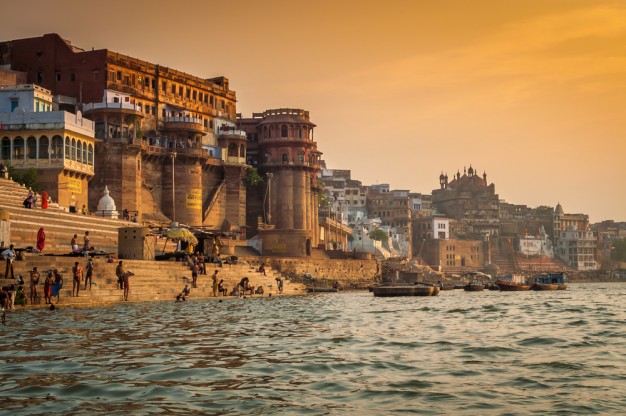
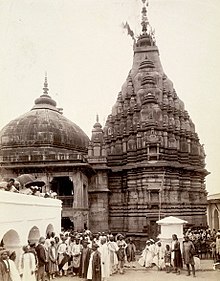
Her pious munificence, which was said to be unexampled as it was unbounded, extended beyond general charity to a vision and commitment to rebuild destroyed Hindu heritage all over India, the biggest and most widespread works of revival and resuscitation of ancient teerthas and kshetras ever undertaken by a ruler after the epoch of Islamic ravages. When Malhar Rao’s treasury came into her possession, she dedicated them through a consecration ceremony to purposes of charity. It was through these personal proceeds, and not state wealth, that all her philanthropic activities were financed. One of her outstanding qualities was a sharp acumen for accounts[10]. She spent large sums of money on sacred buildings in Maheshwar, erecting temples and in building wells, dharamshalas, rest houses, alms houses, monasteries, ghats, bridges, gardens, and other conveniences, not only within her territories, but all over at sacred sites from Kedarnath to Cape Comorin. This wider view of Hindu heritage across the length and breadth of the country beyond her provincial authority served to unify Hindu awareness about the sacred landscape of India and the land as a civilisational unit. She built hundreds of temples and shrines and made grants for their maintenance at principal places of Hindu pilgrimage (Jyotirlings, sapta puras, chaardhams), at Gaya, Jagannath, Dwarka, Rameshwaram, Kedarnath, apart from disbursing annual sums for charity, both at sites of Puranic significance as well as modern traditions and panths like Nath, Dutta, and others. The most remarkable feature of her rebuilding works was the construction of the Kashi Vishweswara temple at Varanasi in 1777, which had been previously destroyed by the Mughal ruler Aurangzeb.
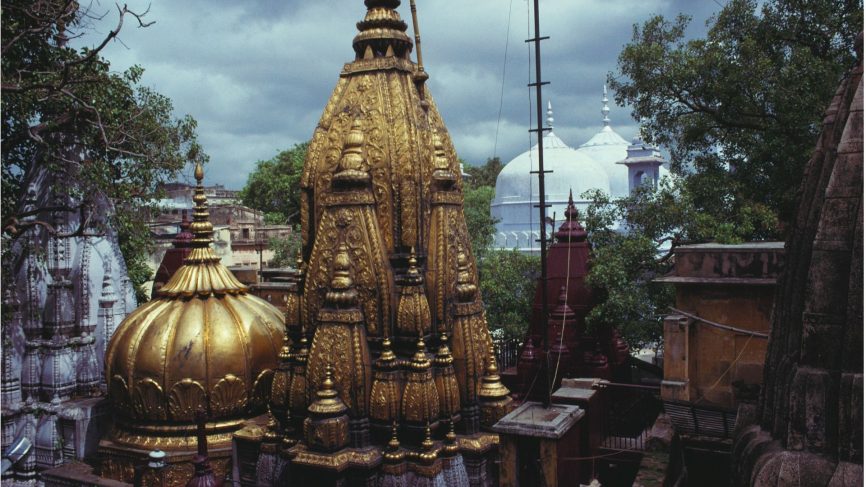

The elaborately laid out precincts and ghats of these temples bespeak not just architectural excellence but mindfulness of the utmost sanctity of these place and needs of pilgrims who undertook devotions at these sites. She was stringent when it came to maintaining the purity of the holy places. When it came to her ears that a butcher had opened a shop at Jejuri near the holy shrine of Khandoba (a form of Shiva), the owner was warned in the strictest terms:
“You have opened a shop in the kshetra (holy place) near the spot where our buildings etc. are being raised. There is no earthly reason for the location of the shop on the spot. This order is, therefore passed; you are to remove the shop as early as you can, on the receipt of this order. You shall have to suffer in case you disobey.”
Ahalyabai also continued previous grants to the mosques in her jurisdiction. She established a system to maintain constant supply of Ganges water for washing the sacred images in different temples all over India[11] and through this her fame carried to the deep South of India.
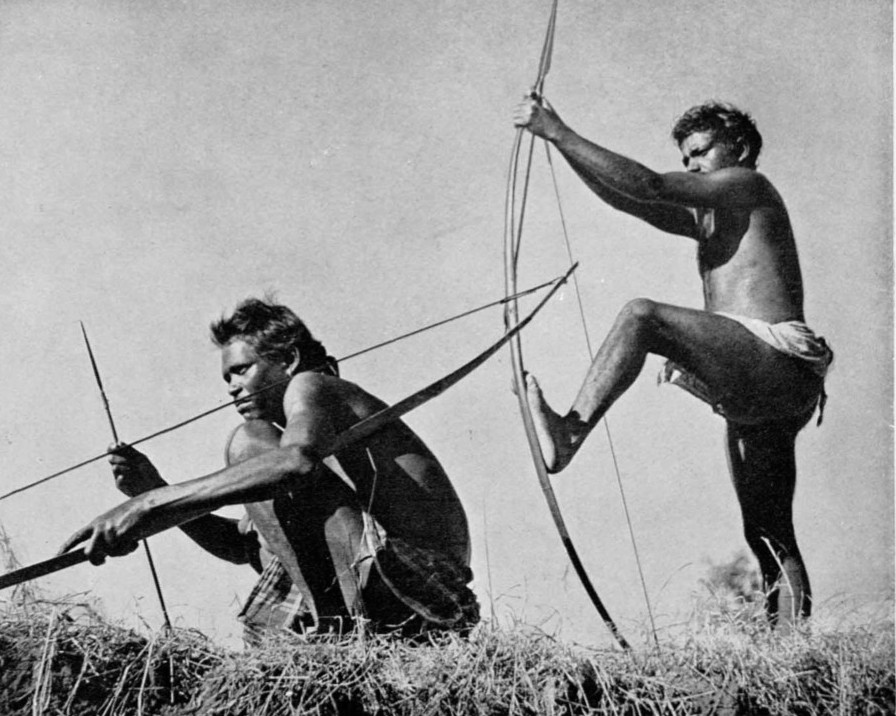
In disposition she was said to be serene and cheerful, but on the authority of Baramal Dada’s word, who was the manager of the estates in Maheshwar for several years, it is said that when really angered, which was rare, her countenance struck terror in the hearts of the boldest. The more refractory and predatory sections of her subjects, e.g., the Gonds of the Narmada belt, and the Bhils of the mountainous tracts, were dealt with a firm hand, sometimes even severely, though seldom the case, since she was nothing if not just and considerate. Rigorous action was pursued only if conciliatory moves failed and incorrigible offenders were put to death. As much as she was capable of inspiring dread if occasion demanded it, she preferred the satisfaction of gentler recourses and the recalcitrant elements ultimately yielded to her treatment. She established military posts to put an end to their plundering habits, while at the same time invited them to be part of a better mode of life while recognising their ancestral customs and privileges. She admitted their right to earn a small duty, never more than a pice for a bullock load, for those passing through their hills, and in return for this concession secured their obligation to protect these routes and to recover property stolen from within the limits of their districts.
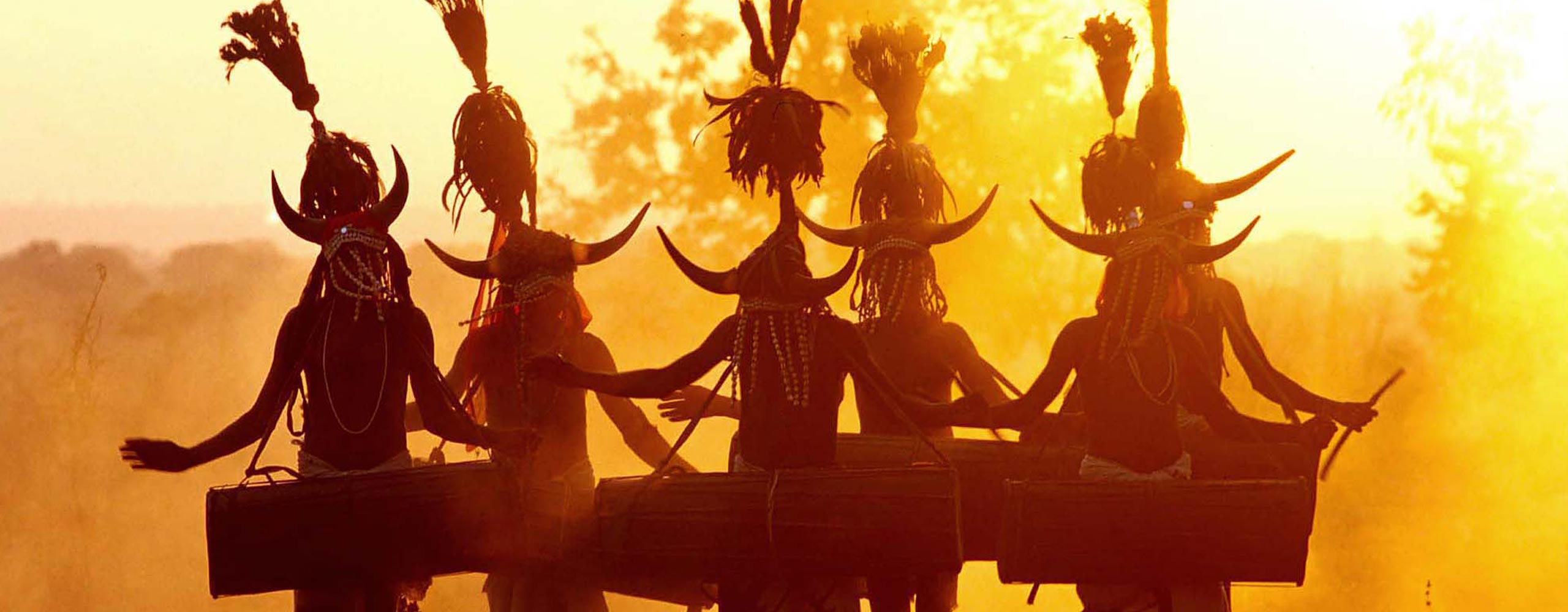
Called the ‘philosopher-queen’ by British historian John Keay, Ahalyabai had a mind more cultivated than most women of her times, well-read in the Puranic and other scriptural traditions. Her acuity about the wider political scene of her times may be inferred from the following word of caution from her in a letter to the Peshwa in 1772, in which she had warned against association with the British, likening their embrace to a bear-hug:
“Other beasts, like tigers, can be killed by might or contrivance, but to kill a bear it is very difficult. It will die only if you kill it straight in the face, Or else, once caught in its powerful hold, the bear will kill its prey by tickling. Such is the way of the English. And in view of this, it is difficult to triumph over them.”

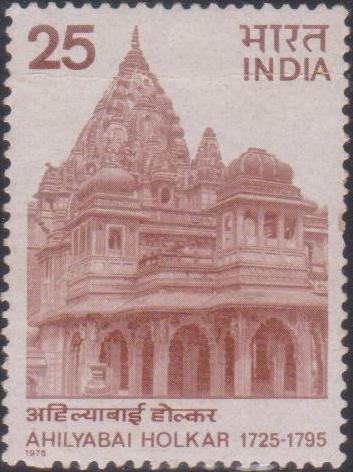
She proved to be the uniting factor for the Maratha confederacy at a challenging time after the disastrous loss at Panipath in 1761, respected uniformly by all, some of whom among themselves could not see eye to eye.
Consistent with her times Rani Ahalyabai followed the observances for widows, dressed plainly in white, bare of jewellery save a necklace, absorbed in spiritual practices. On August 13, 1795 Rani Ahalyabai passed away at the age of seventy, according to some, her end having been hastened by too rigorous observance of fasts by her prescribed dharma. It is hardly possible to overstate the deep veneration with which she was held throughout the country. Sir John Malcolm records the words of a contemporary Brahmin from Pune on the queen:
“I was in one of the principle offices in Poona during the last years in her administration, and know well what feelings were excited by the mere mention of her name[12]. Among the princes of her own nation it would have been looked upon as sacrilege to have become her enemy, or, indeed, not to have defended her against any hostile attempt. She was considered by all in the same light. The Nizam of the Deccan[13] and Tipu Sultan granted her the same respect as the Peshwa; and Muhammadans joined with Hindus in prayers for her long life and prosperity.”
She is deified as a devi[14] and to this day her name is sacred to the natives of Malwa. But even in the most dispassionate assessment “she appears to have been, in her limited sphere, the purest and most exemplary ruler that ever existed.”[15]
References:
- ‘Ahilyabai Charitra’ (Marathi)
- Devi Shree Ahilyabai Holkar – Holkar State History, Vol. II
- Malcolm’s Memoir of Central India – C. H. Payne
- A Memoir of Central India, Including Malwa, and Adjoining Provinces, Vol. I – Sir John Malcolm
- ‘Maharashtrache Shilpakar Tejaswini Aahilyadevi Holkar’ (Marathi)
[1] “His administration of the countries subject to his direct control was firm but considerate, and his powers over the petty Rajput chiefs of Malwa were exercised with moderation and good faith. Many of the latter were his associates and adherents, and amongst their descendants he is still remembered with sentiments of gratitude.” ~ Sir John Malcolm (1769 – 1833)
[2] “It is not common with the Hindus (unless in those provinces where they have learnt the degrading usage from their Mahomedan conquerers) to confine females, or to compel them to wear veils. The Mahrattas of rank (even the Brahmins) have, with few execptions, rejected the custom, which is not prescribed by any of their religious institutions. Ahalya Baee, therefore, offended no prejudice when she took upon herself the direct management of affairs; and sat every day, for a considerable period, in open durbar, transacting business.” (‘A Memoir of Central India Including Malwa and Adjoining Provinces’, Sir John Malcolm)
[3] “…it was she who gave to the government of the Holkar territories the high character for which, throughout her life, it was renowned.” ~ Sir John Malcolm
[4] “That he was a man of much nobility of character is proved by his relations with Ahalyabai, whom he served with unfailing devotion, and by the high estimation in which he was held by that distinguished lady.” ~ Malcolm
[5] “From the original papers and letters, it becomes clear that she was first-class politician, and that was why she readily extended her support to Mahadji Shinde. I have no hesitation in saying that without the support of Ahilyabai, Mahadji would never have gained so much importance in the politics of northern India.” ~ Jadunath Sarkar
[6] “The Devi is possessed of qualities both of head and heart to serve and save the state. Service under her is sure to conduce to temporal advance and spiritual welfare for good. The tact of managing all and sundry is inborn with her.” ~ Madhav Pant Hingane (The Maratha ambassador at Delhi Court) to Nana Fadnavis
[7] “Only an unusual vigour of mind and body could have enabled her to go through the labours which she imposed upon herself, and which, from the age of thirty to that of sixty, when she died, were unremitted.” ~ Sir John Malcolm
[8] “..she affords a striking example of the practical benefit a mind may receive from performing the duties of the world under a deep sense of responsibility to its Creator.” ~ Malcolm
[9] “Poor strangers from the night to shield.
And many a well and cooling tank
Upon the traveller’s route they sank.
The thirsty oxen in the plough.
See help at hand, and stop to bow
Their heads unto the trough beneath.
And drink the welcome draught with seething, long drawn breath.
Upon her heart they had their claim,
Yea, Ahalya Baee even cared for them.” ~ ‘Ahalya Baee’, by Mrs Joanna Baillie
[10] Well-documented account of the expenditures were found in the ‘Devasthan Classification List’ in 1923 by the then Holkar Government.
[11] A tradition still honoured and upheld by the Holkar family.
[12] “Devi…….You were preceded by Shree Ramchandra, Yudhisthira and Janak of Pauranik fame: Ashoka, Vikramaditya and Harshavardhan next followed: Chhatrapati Shivaji and your good-self took up the flag in war and peace and kept it high to guide for ever the faltering feet of humanity! May your memory be our cherished treasure-trove!” – Homage to Ahalyabai, ‘Holkar State History-Vol II – Life and Life’s work of Devi Shree Ahilya Bai’
[13] “There is none among contemporary rulers, equal to the Devi…” ~ Nizam of Hyderabad
[14] Moropant, a contemporary poet of Maharashtra adorned the queen with the name ‘punyashlok’ (one devoted to justice and duty) and compared her to the river Ganga as “possessed of meritorious fame, and devoted to excellence”.
[15] Malcolm
